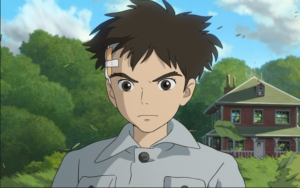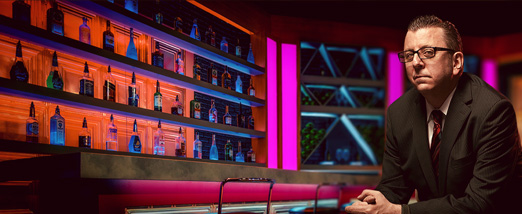THE BOY AND THE HERON: 4 STARS. “a simple tale, with an ‘Alice in Wonderland’ vibe.”
 Imaginative and visually beautiful, “The Boy and the Heron,” a new film from Japanese animator, filmmaker and manga artist Hayao Miyazaki, now playing in theatres, is a unique look at life, death and friendship.
Imaginative and visually beautiful, “The Boy and the Heron,” a new film from Japanese animator, filmmaker and manga artist Hayao Miyazaki, now playing in theatres, is a unique look at life, death and friendship.
The twelfth film by Miyazaki and the 23rd film from Studio Ghibli centers on Mahito Maki (Soma Santoki), a 12-year-old boy whose mother is killed in a 1943 Tokyo hospital bombing. A year later, Mahito’s father Shoichi (Takuya Kimura), owner of an air munitions factory, marries his late wife’s sister Natsuko (Yoshino Kimura) and moves to her country home. Still racked with grief over his mother’s death, Mahito has a tough time in his new home and does not get along with his step-mother/aunt.
Then there is the Grey Heron (Masaki Suda) who bedevils him daily.
Mahito feels lost, cut adrift from everything he once knew until he discovers a mysterious tower, built on the property by his granduncle, a famous architect who went missing.
The chatty Heron tells Mahito that his mother is inside, and if he wants to find her, all he has to do is go have a look. Inside is a mystical, alternate universe inhabited by the living and the dead. With the heron at his side, Mahito enters a world of wonder, with strange creatures, like man-eating parakeets, souls waiting to be born, secrets and just possibly, a path to happiness.
“The Boy and the Heron” is a work of great texture. Miyazaki infuses every frame with warmth and wonder, poignancy and poetry. The story can be convoluted and introspective, but at its heart, it is a simple tale, with an “Alice in Wonderland” vibe, of coming to grips with heartbreak.
The hand drawn animation is beautiful. Miyazaki uses symbolism, metaphor and fantasy to draw out his themes of grief, loneliness and fear. It’s a complex movie, with equal measures of whimsy and pathos, that shows that octogenarian Miyazaki is still working at the top of his game.
